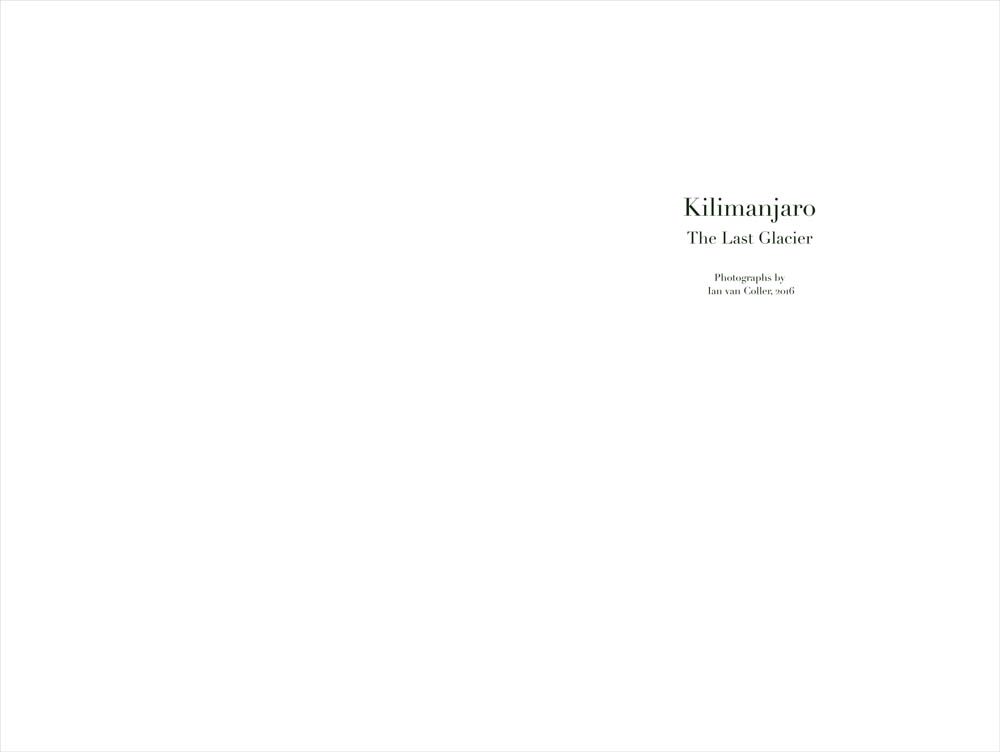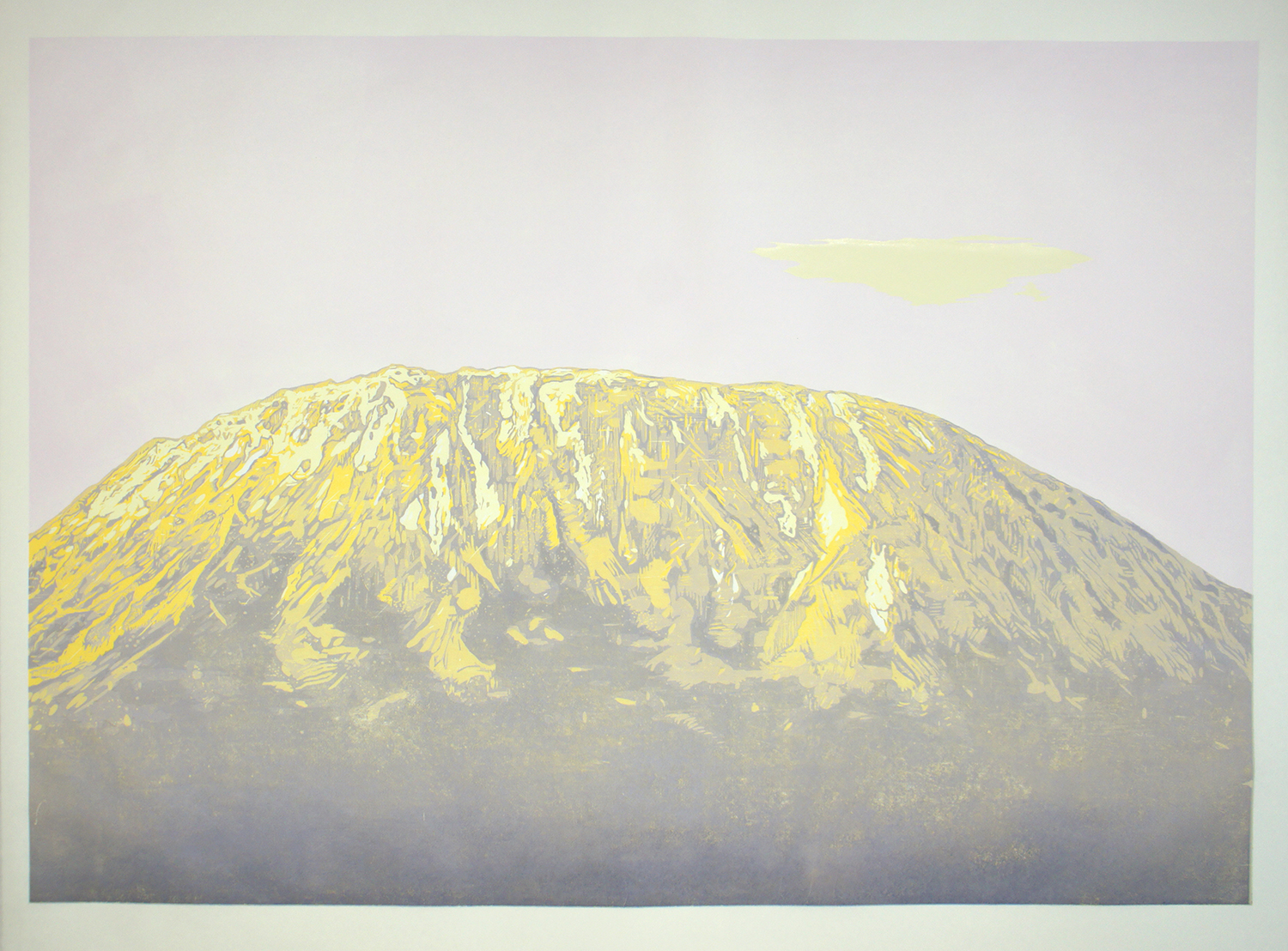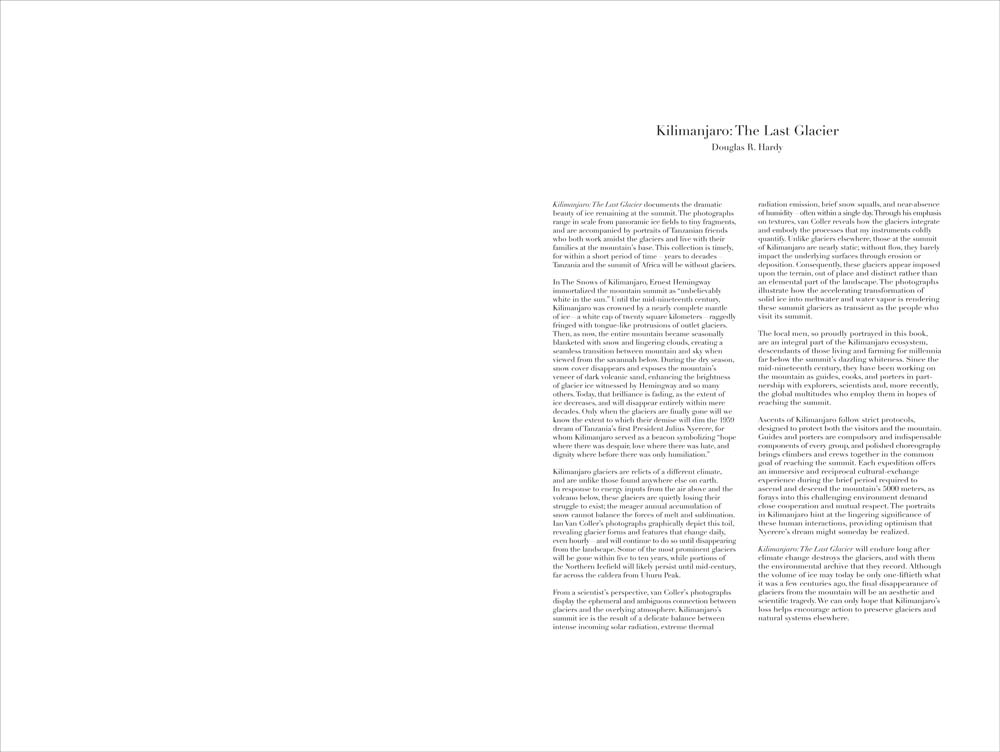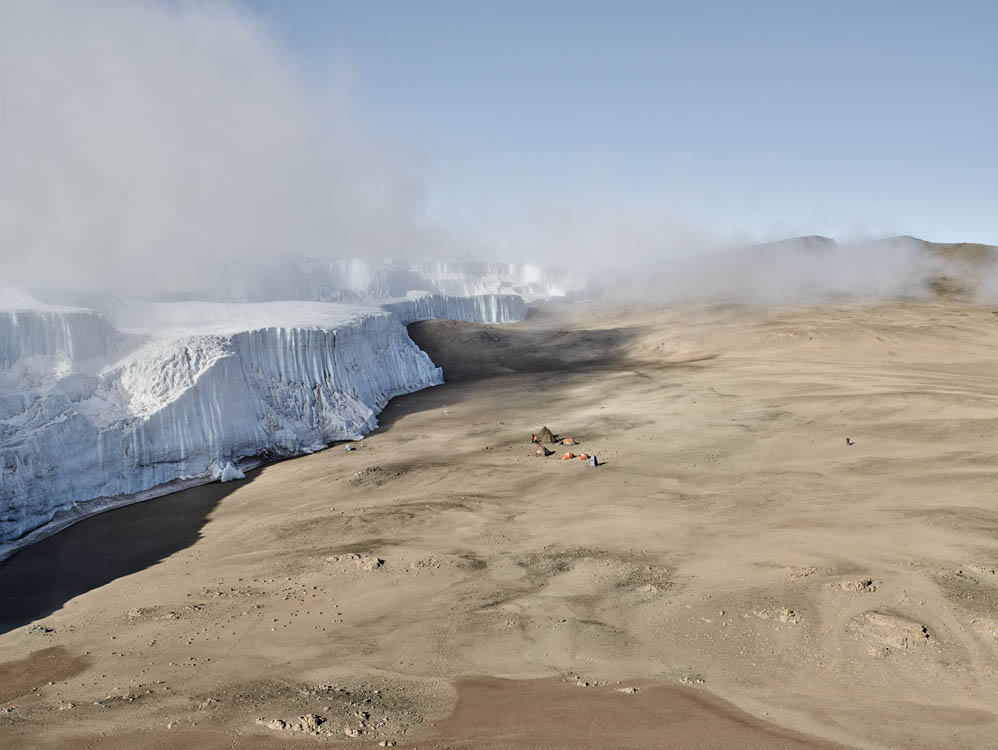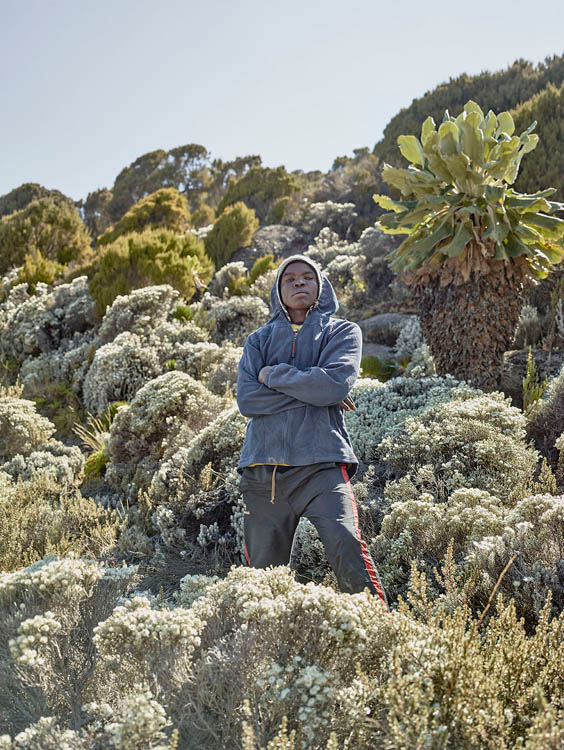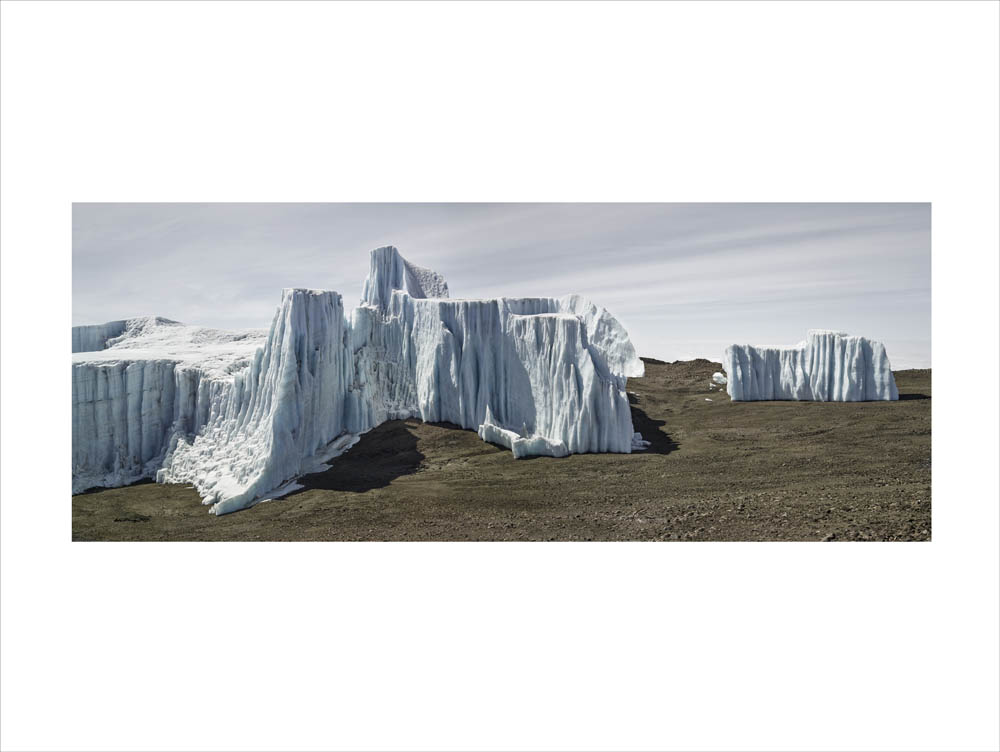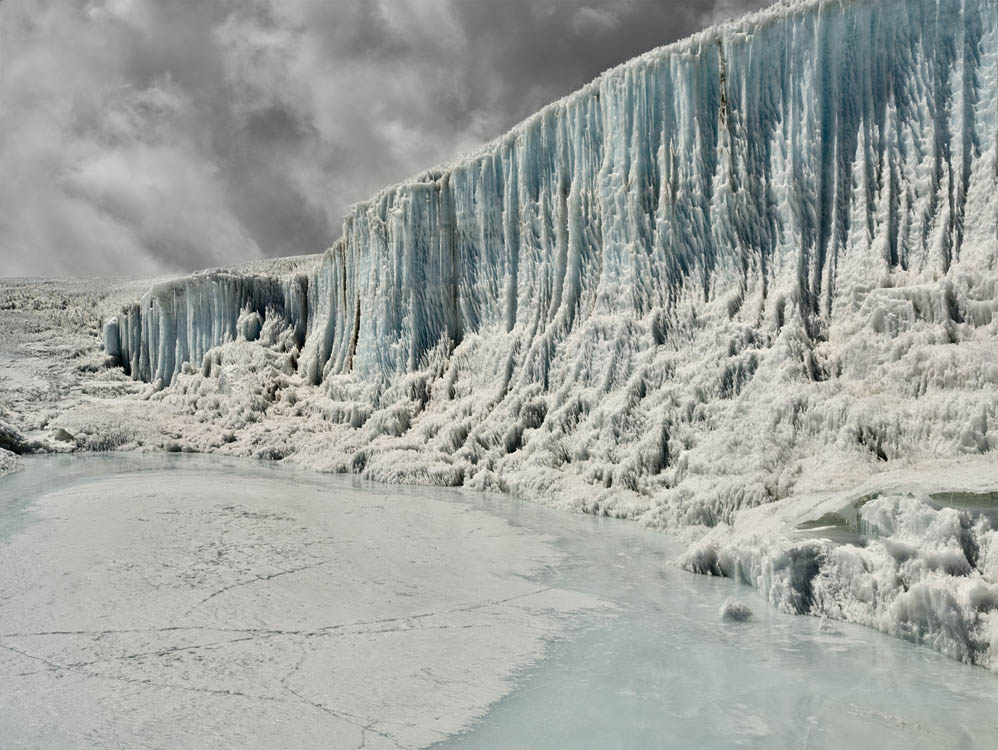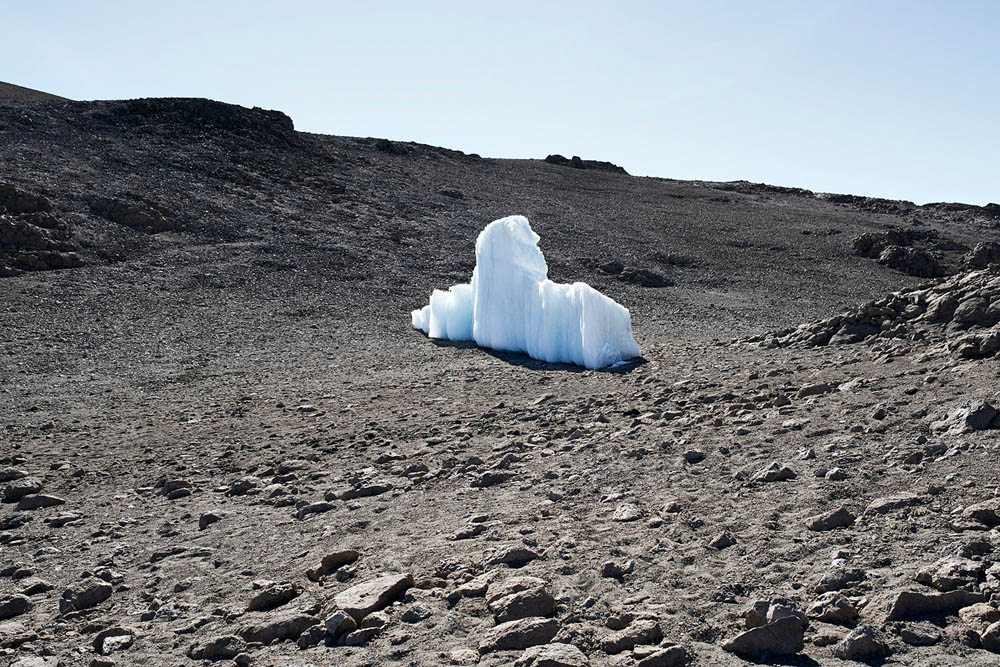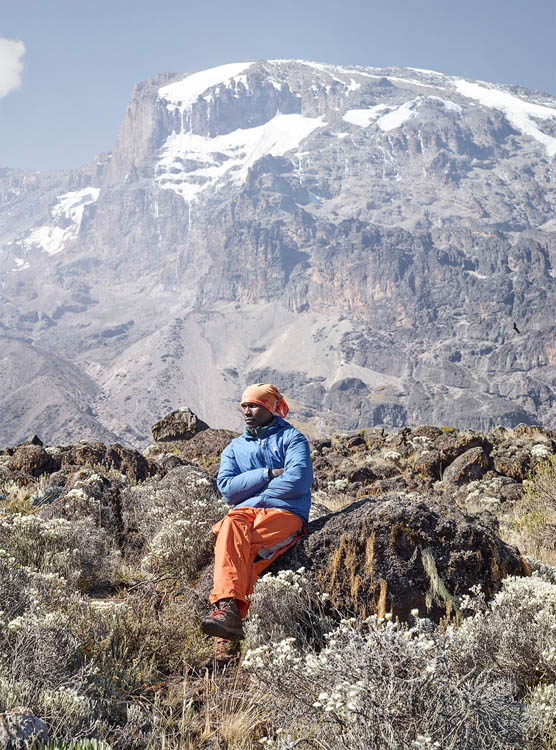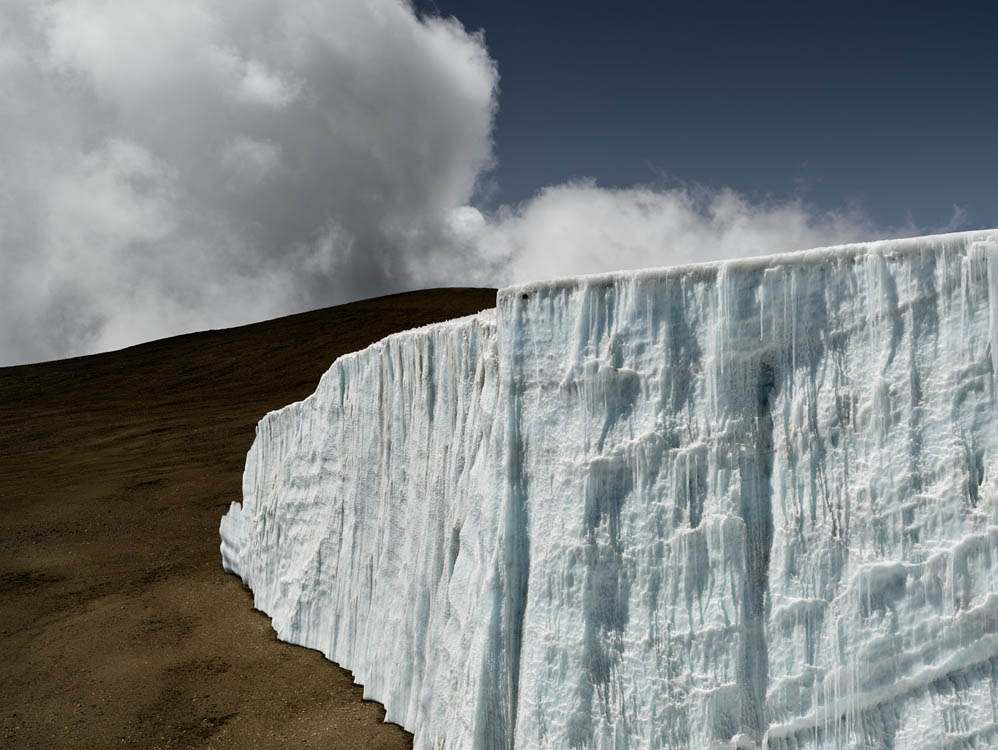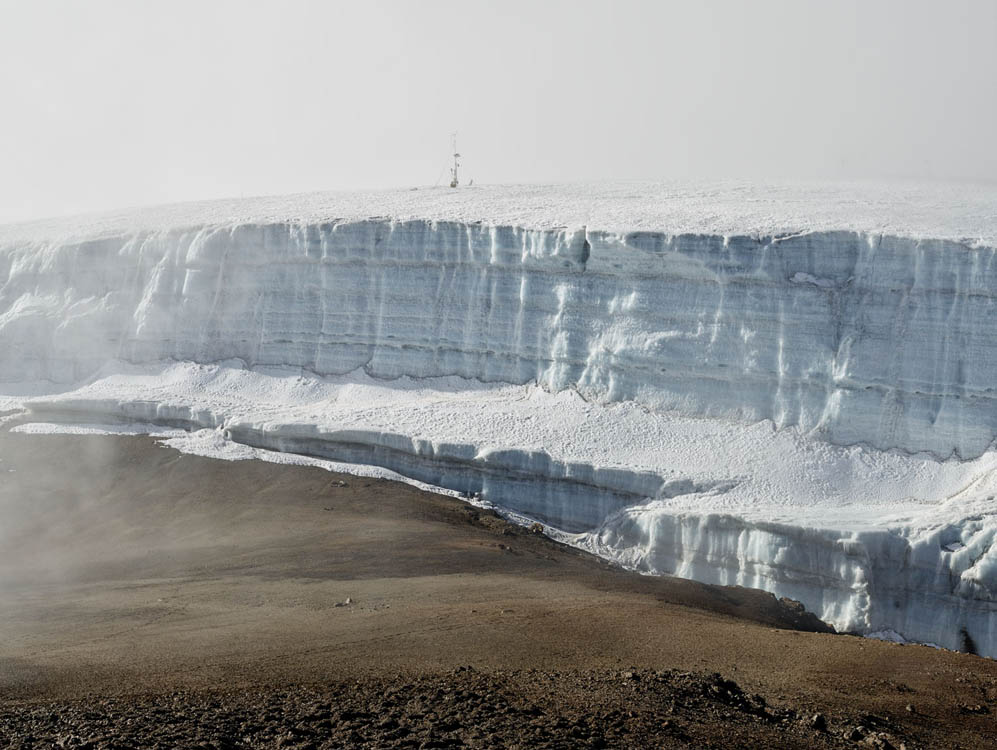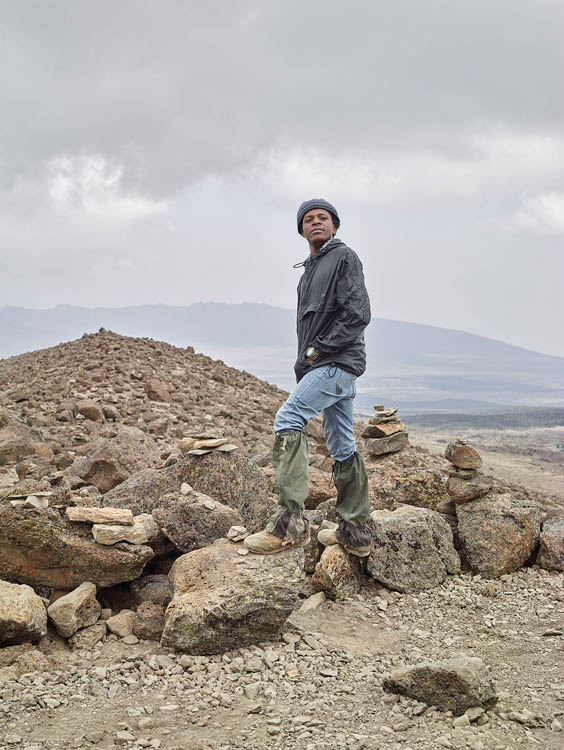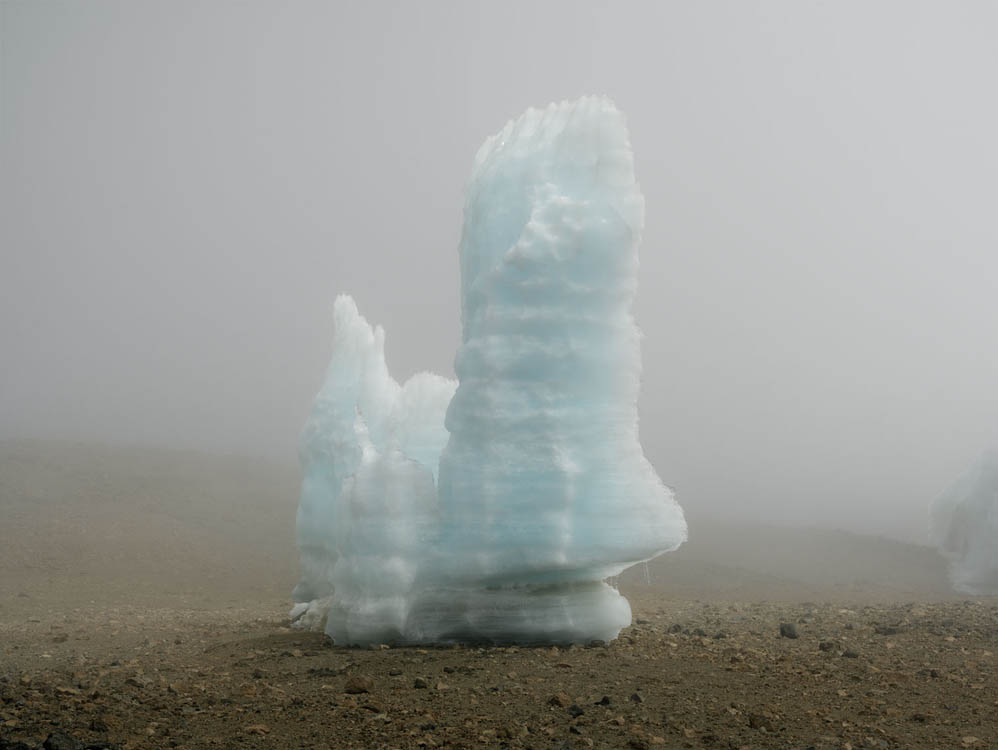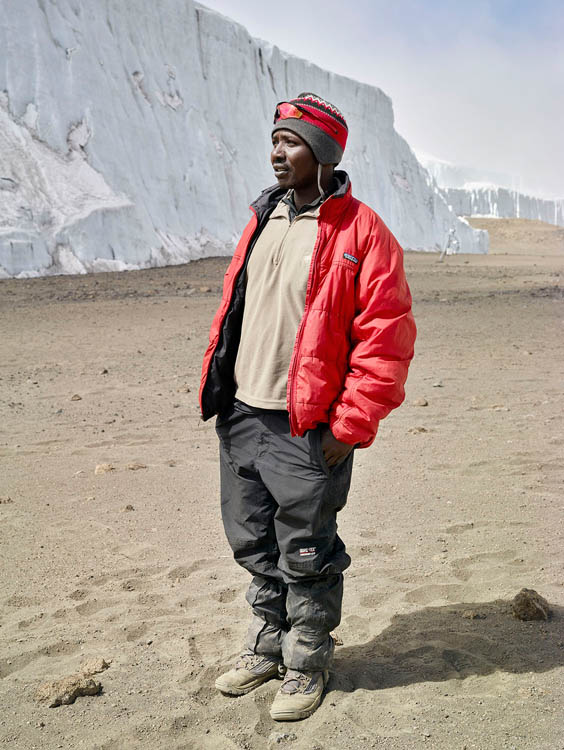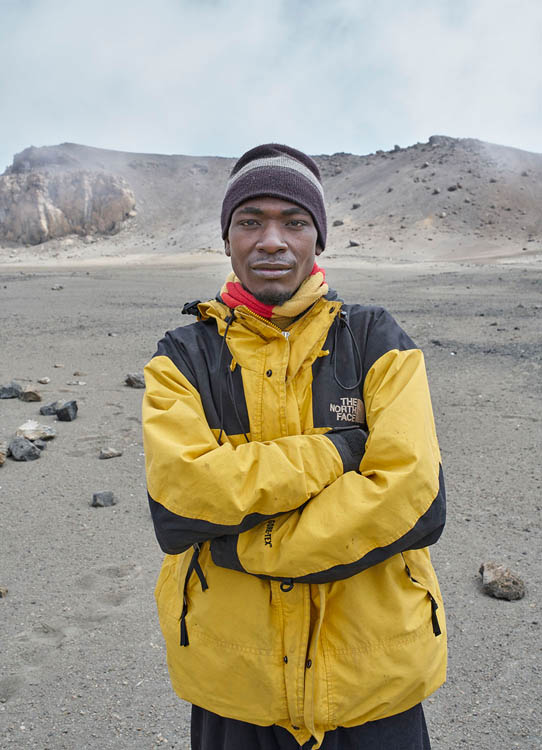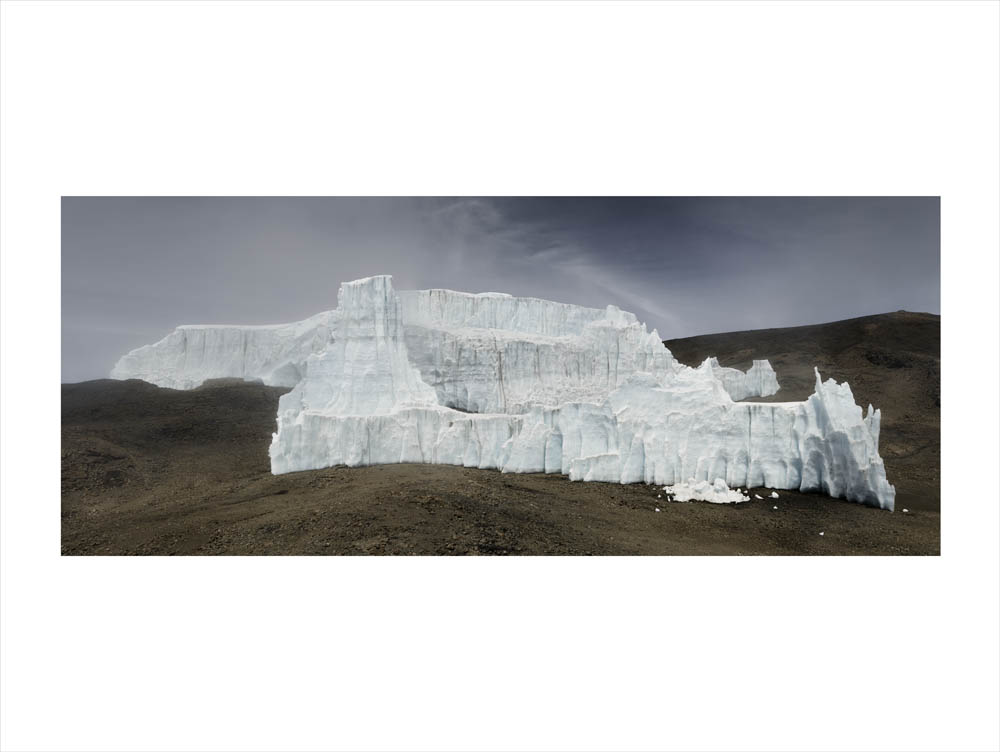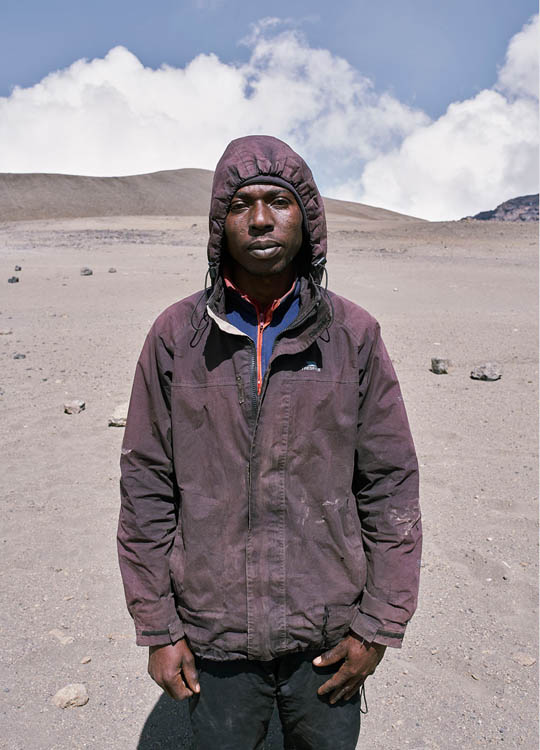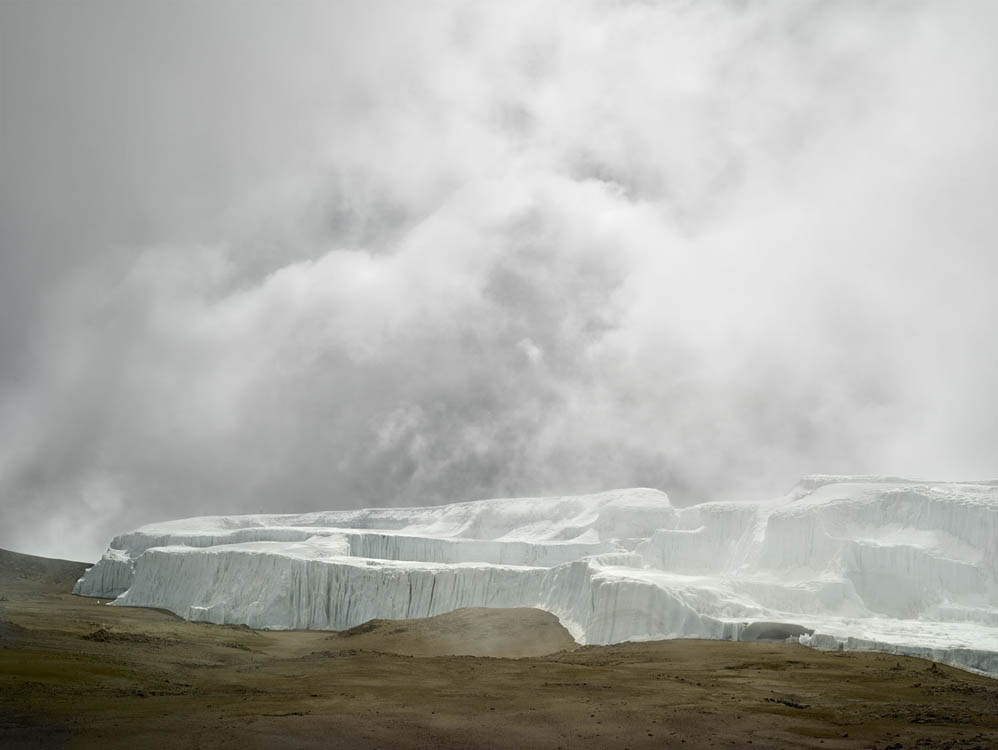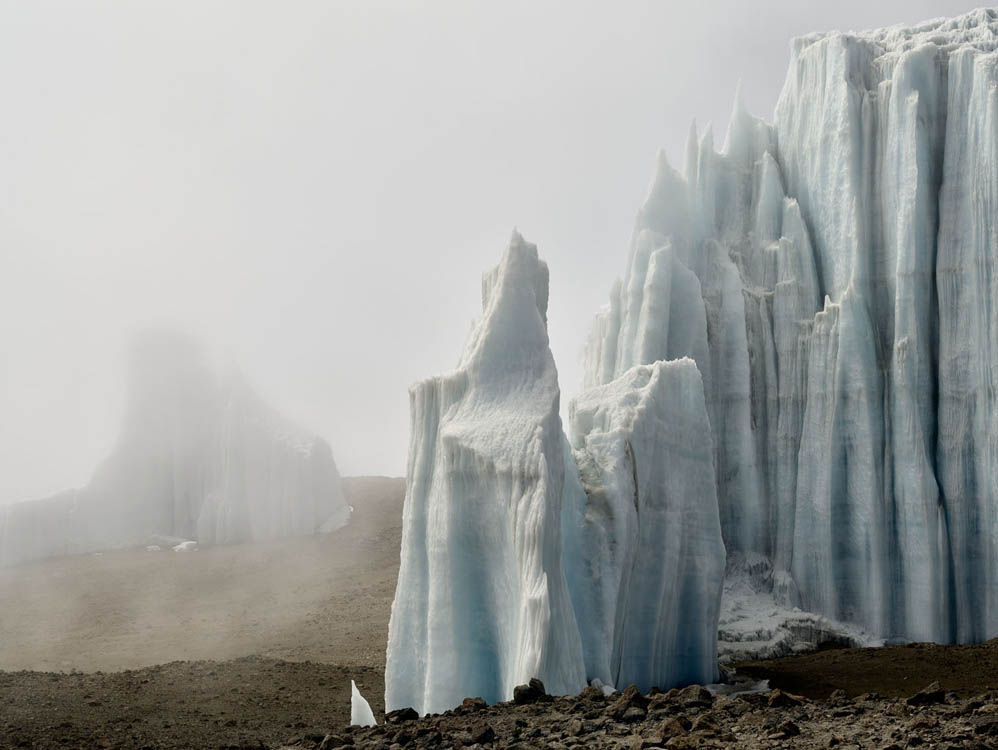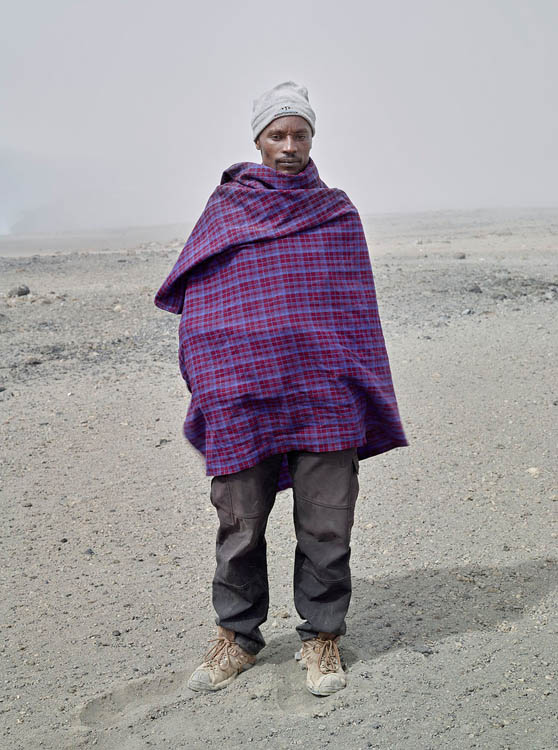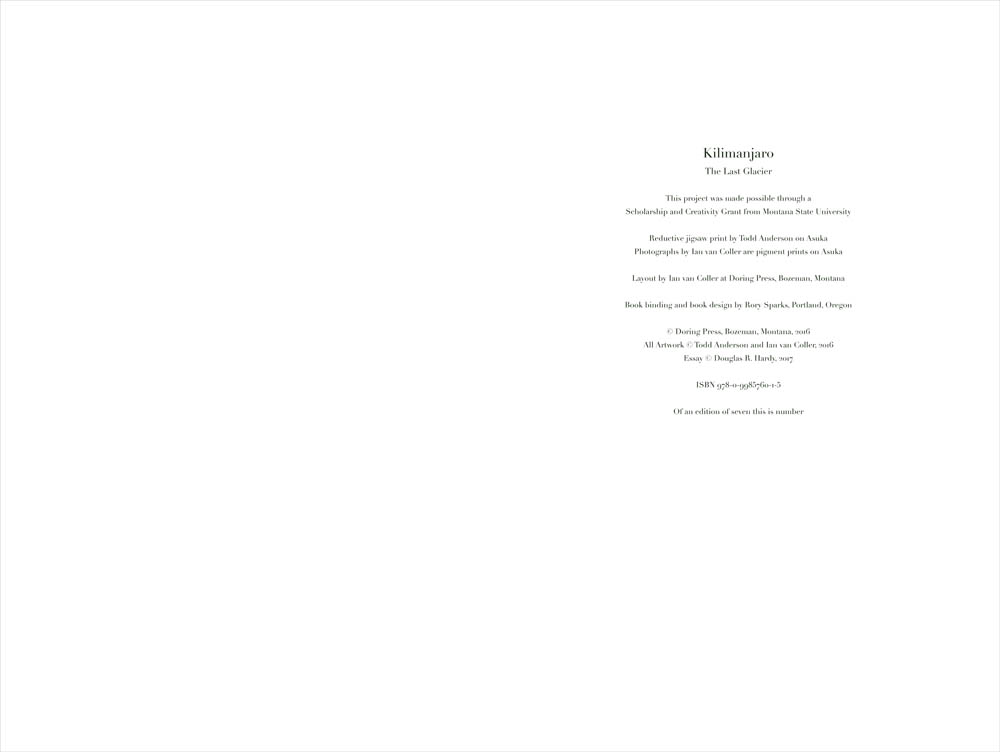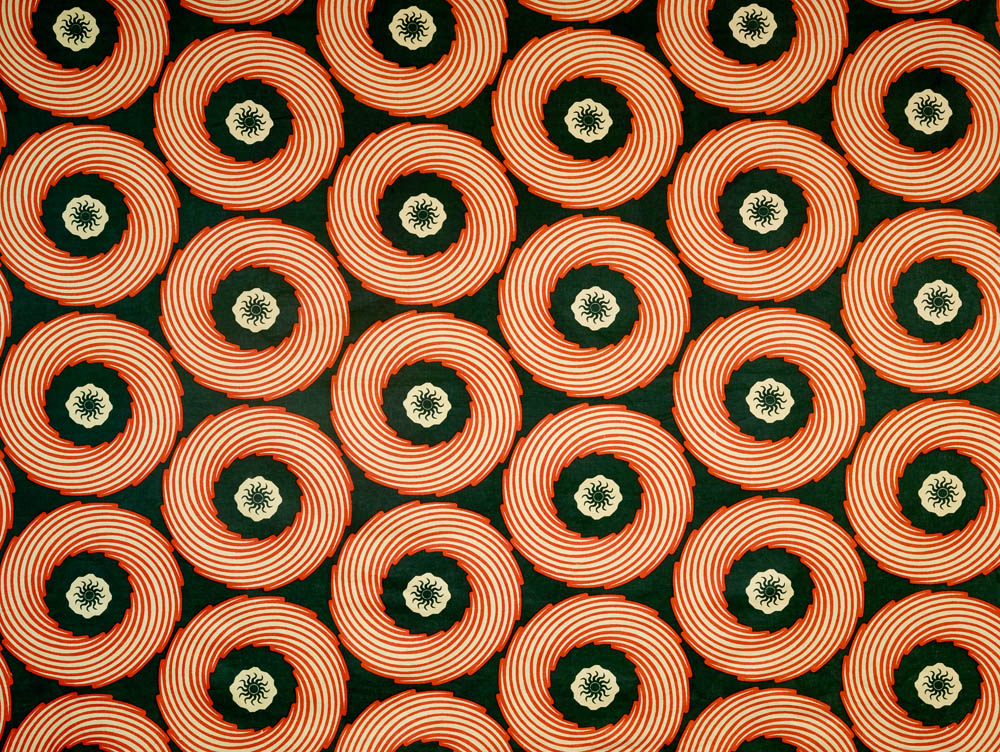Mount Kilimanjaro
Mount Kilimanjaro: The Last Glacier is a limited edition artist book. This is a monumental artist book (125cm or 50inches when open) of photographs made on Mt. Kilimanjaro in 2016. All photographs and printing of photographs are by Ian van Coller. Reductive woodblock print by Todd Anderson. Essay by Dr. Douglas R. Hardy. Bookbinding by Rory Sparks. Edition of 7.
Availability and pricing available upon inquiry.
Essay
Kilimanjaro: The Last Glacier
By Douglas R. Hardy
Ian van Coller’s artist book Kilimanjaro: The Last Glacier renders the dramatic beauty of the remaining ice atop Kilimanjaro in monumental proportions. The photographs depict ice that ranges in scale from panoramic ice fields to human-size, dwindling fragments of glaciers. Accompanying these photographs are portraits of friends who work amidst the glaciers and live with their families at the mountain’s base. Within a short period of time—years to decades—Tanzania and the summit of Africa will be without glaciers.
In his short story The Snows of Kilimanjaro, Hemingway immortalized the mountain summit as “unbelievably white in the sun.” Until the mid-nineteenth century Kilimanjaro was crowned by a nearly-complete mantle of ice—a white cap of twenty square kilometers—raggedly fringed with the tongue-like protrusions of outlet glaciers. Then, as now, the entire mountain becomes seasonally blanketed by layers of snow and hovering clouds, creating a seamless transition between mountain and sky when viewed from the savannah plains below. The snow disappears during the dry season and exposes the mountain’s veneer of dark volcanic sand, enhancing the brightness of glacier ice witnessed by Hemingway and so many others. Today, that brilliance is fading, as the extent of ice decreases, and will disappear entirely within mere decades. Only when the glacier ice is finally gone will we know the extent to which their demise will dim the 1959 dream of Tanzania’s first President Julius Nyerere, for whom Kilimanjaro served as a beacon symbolizing “hope where there was despair, love where there was hate, and dignity where before there was only humiliation.”
Kilimanjaro glaciers are relicts of a different climate, and unlike those found anywhere else on earth. In response to energy inputs from the air above and the volcano below, these glaciers are quietly losing their struggle to exist. The meager annual accumulation of snow cannot balance the forces of melt and sublimation. Van Coller’s photographs graphically depict this toil, revealing glacier forms and features which change daily, even hourly—and will continue to do so until disappearing from the landscape. Some of the most prominent glaciers will be gone within 5-10 years, while portions of the Northern Icefield will likely persist until mid-century, far across the caldera from Uhuru Peak.
From a scientists’s perspective, van Coller’s photographs reveal the ephemeral and ambiguous connection between glaciers and the overlying atmosphere. Kilimanjaro’s summit ice is the result of a delicate balance between intense incoming solar radiation, extreme thermal radiation emission, brief snow squalls, and near-absence of humidity—often within a single day. Through his emphasis on textures, van Coller's images reveal how the glaciers integrate and embody the processes my instruments coldly quantify. Unlike glaciers elsewhere, those at the summit are nearly static; without flow, they barely impact the underlying surfaces through erosion or deposition. Consequently, these glaciers appear imposed upon the terrain—out of place and distinct—rather than an elemental part of the landscape. The photographs illustrate how the accelerating transformation of solid ice into meltwater and water vapor is rendering these summit glaciers as transient as the people who visit its summit.
The local men, so proudly portrayed in this book, are an integral part of Kilimanjaro’s environment, living and farming for millennia far below the summit’s dazzling whiteness. Since the 1950s, they have been working on the mountain as guides, cooks, and porters in partnership with explorers, scientists and, more recently, the global multitudes who employ them in hopes of reaching the summit.
Ascents of Kilimanjaro follow strict protocols, designed to protect both the visitors and the mountain. Guides and porters are compulsory and indispensable components of every group, and polished choreography brings climbers and crews together in the common goal of reaching the summit. Each expedition offers an immersive and reciprocal cultural-exchange experience during the brief period required to ascend and descend the mountain’s 5000 meters. Each foray into this challenging environment demands close cooperation and mutual respect. The portraits in Kilimanjaro hint at the lingering significance of these human interactions, providing optimism that Nyerere’s dream might someday be realized.
The artist book Kilimanjaro: The Last Glacier will endure long after climate change destroys the glaciers, and the environmental archive they record. Although the volume of ice may today be only one-fiftieth what it was a few centuries ago, the final disappearance of glaciers from the mountain will be an aesthetic and scientific tragedy. We can only hope that Kilimanjaro’s loss helps encourage action to preserve glaciers and natural systems elsewhere.
